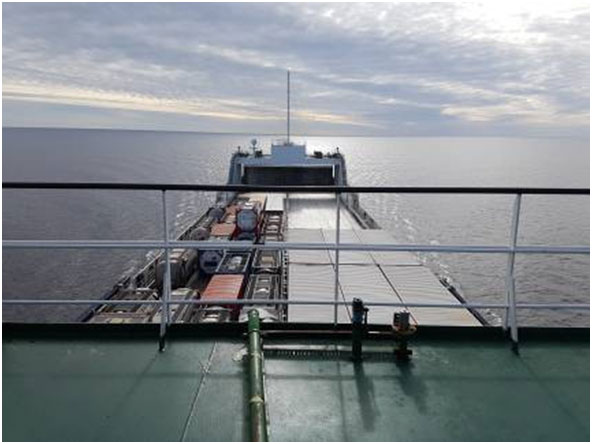
Closely related to the work of a naval architect is that of marine engineers; the two professionals often work together as a design team. However, the field of marine engineering is broader. It may include work on ships, oil rigs, and dock construction as well as responsibility for maintaining all the machinery on a ship as a licensed ship's officer. In the latter capacity, a marine engineer starts out as a third assistant engineer and works up to the highest grade, chief engineer, in seven to ten years. Some shipyard-related tasks of marine engineers involve supervision of ship repairs, evaluation during shakedown cruises, and design of boilers as well as propulsion and ventilating systems.
Salaries and working conditions of marine engineers are generally comparable to those of naval architects, as are the necessary personality and academic abilities. The employment outlook for marine engineers is variable. The colleges listed in this chapter for naval architects also offer major programs in marine engineering with the exception of the University of California at Berkeley. The state and national maritime academies also offer programs.
The National Marine Engineers Beneficial Association (AFL-CIO), 30 Montgomery Street, Jersey City, New Jersey 07302, represents approximately ten thousand of its members serving aboard ships. This union and participating companies administer the Calhoon MEBA (Marine Engineering Beneficial Association) Engineering School. In its three-year upgrading program, the school aims to train marine engineers who will maintain and operate all machinery and all systems aboard ship, including sophisticated electronic equipment.
SKILLED CRAFTS
This section summarizes many of the crafts that compose the skilled workforce in the shipyard.
One of the most important operations in the yard is welding, the technique that joins the metal pieces of the ship together. Metal-workers of all kinds’ heat, cut, bend, and shape their materials into parts that will be welded together. As the ship takes form, carpenters prepare a building basin or building ways for the laying of the keel and the subsequent assembly.
Crane operators use huge cranes to lift preassembled parts into place. Prefabrication takes place in the shops in the yard, thus reducing cost. Pennsylvania Shipbuilding (Chester, Pennsylvania) has a unique floating crane, with eight hundred tons capacity. It's a virtual twenty-three-story skyhook.
Ship fitters see that each piece is correctly located and securely fastened by riveters, welders, and other workers. Edges are trimmed by chippers by air arc process.
A new staff takes over following launch, when the ship moves to the outfitting pier. At this point, engineers and machinists prepare, install, and test propulsion equipment. Electricians, carpenters, boilermakers, sheet-metal workers, painters, plumbers, and others construct internal systems and facilities.
If you want to get skilled work in the yard, you should pursue high school courses related to your special interest (electricity, machinery, mechanical drawing, computer-aided drafting and design, carpentry). Employers prefer men and women who have graduated from high school and have had some work experience. Once employed, the new worker begins as a helper (for example, a plumber's helper aids and learns from a master plumber), then proceeds to a formal apprenticeship program for three or more years. Following the apprenticeship, the employee qualifies as a journeyman (not included in all crafts). The final level is master, meaning a fully skilled worker.
Shipyard employees, as skilled workers, earn a good salary and enjoy good benefits. Some specialists with skills receive premium salary. The employment outlook remains fair, since certain segments of the shipbuilding industry are undergoing a mild renaissance. A variety of unions dominates the industry and operates apprenticeship programs in cooperation with shipbuilding companies. For additional information contact the following firms (because of the state of shipbuilding, some "yards" have merged and others have closed and these trends will continue):
The U.S. Maritime Administration (MARAD) is charged with the mission "to promote the development and maintenance of an adequate, well-balanced, United States merchant marine, sufficient to carry the Nation's domestic waterborne commerce and a substantial portion of its waterborne foreign commerce, and capable of serving as a naval and military auxiliary in time of war or national emergency." MARAD also "seeks to ensure that the United States enjoys adequate shipbuilding and repair service, efficient ports, effective intermodal water and land transportation systems, and reserve shipping capacity in time of national emergency."
See the following articles for more information:
- Find Your Calling: A Checklist
- 5 Ways To Build Your Career Outside of the Office
- How To Impress Your Interviewer When Making a Career Change
- 5 Tips For Successful Networking
